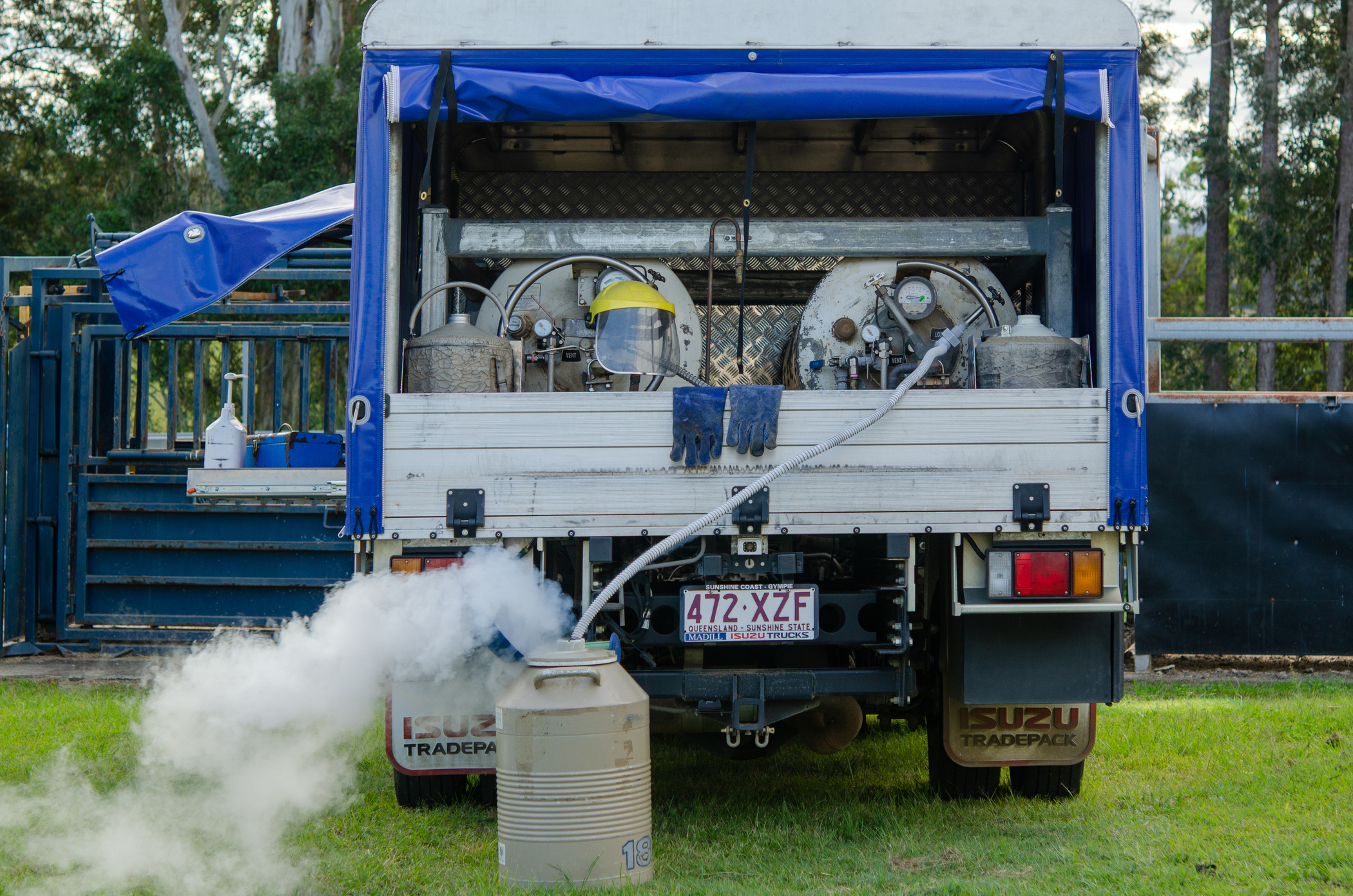Semen should be evaluated grossly for abnormal appearance. The presence of small "clots" or blood can indicate such conditions as seminal vesiculitis.
|
Parameter |
Normal Values |
|
Ejaculate volume |
5 ml (range 1-15 ml) |
|
Sperm concentration |
1200 million/ml (range 300-2500 million/ml) |
|
Total sperm per ejaculate |
Typically, 4-5 billion |
|
Progressive motility |
Greater than 30% |
|
Morphology |
Greater than 70% normal |
The quality of frozen semen when it arrives at your farm or ranch is determined by the bull and organisation that processed it. But once it arrives, it is up to you to take proper steps to ensure its viability.
Frozen bull semen can be stored indefinitely if it is maintained constantly at very low temperatures. The critical temperature is approximately -80 degrees Celsius. Semen which is exposed to temperatures warmer than -80° C (even for a short time) and then returned to the storage tank may be damaged.
The extent of damage depends upon how long the semen is exposed to elevated temperatures. Although it is easy to maintain frozen semen at a safe temperature, it is also easy to destroy it in a few moments of carelessness.
The semen storage tank is a large vacuum-sealed metal bottle with an extremely efficient insulation system. Because of the vacuum bottle construction, the temperature can remain at -195.5° C (liquid nitrogen temperature) as long as at least two inches of liquid nitrogen is present. Technical advances in design and construction have produced storage tanks with a liquid nitrogen holding time of six to nine months.
Although semen storage tanks are well constructed, they still are susceptible to damage from mishandling. Semen tanks should be kept in clean, dry, and well-ventilated areas. Avoid excessive movement of the tank. The inner chamber, which contains liquid nitrogen, is suspended from the outer shell by the neck tube. Any abnormal stress on the neck tube, caused by sudden jarring or an excessive swinging motion, can crack the tube. This results in vacuum loss from the outer chamber.

To increase holding time, keep the tank in a cool location away from direct sunlight. Avoiding drafts from furnaces and outside air also helps prevent excessive nitrogen evaporation. However, make sure there is sufficient ventilation in the room to prevent possible suffocation which can be caused by excessive nitrogen gas in the air you breathe.
Protect the tank from corrosion by keeping it elevated above concrete or wet floors. Use boards or pallets. Pick a location that is safe from children and vandals, but does not hide the tank; it must be placed where it can be seen daily and where it can be monitored routinely for nitrogen levels.
Finally, always be watchful for a lid that is left off and for frost or sweat on the tank. Give particular attention to the neck and vacuum fitting. Frost indicates that the vacuum insulation has been lost, and liquid nitrogen has been or is evaporating rapidly. If you suspect this has happened, use a wooden yardstick to measure the amount of liquid in the tank. If the tank contains liquid nitrogen, the semen must be transferred to a good tank immediately. Should the tank be empty of liquid nitrogen it is doubtful that the semen is viable; it should be evaluated before it is used?
Click here to view a video that explains cattle reproduction, valuating the semen quality.